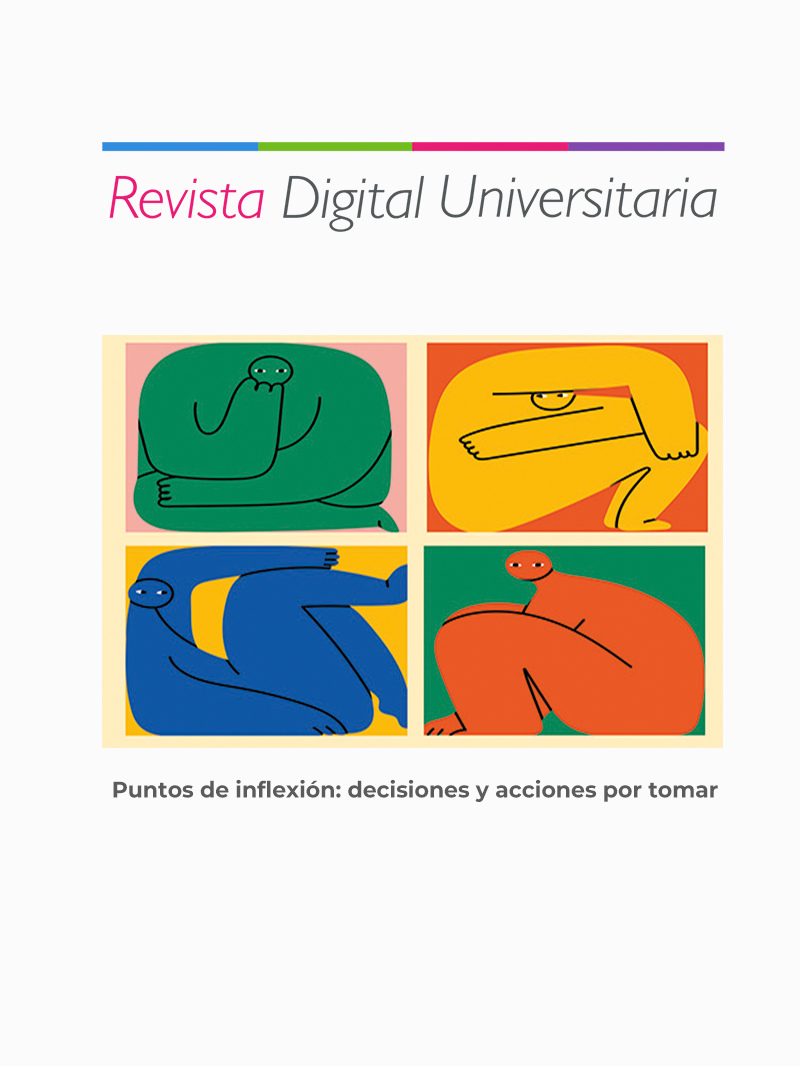The last of us: Science fiction or a possibility in the face of climate change?
DOI:
https://doi.org/10.22201/cuaieed.16076079e.2024.25.2.10Keywords:
Cordyceps, climatic change, global warming, emerging diseasesAbstract
The video game The last of us proposes a pandemic caused by the fungus Cordyceps spp. In this scenario, infected people end up as will-less beings with automaton and cannibalistic behaviors, and the uninfected human population is crowded together in quarantine zones. Before 2019, this would have seemed something laughable, but after a pandemic caused by an emerging virus and two years in confinement, it may be cause for reflection… Could a fungus be responsible for the next pandemic?
References
Boomsma, J. J., Jensen, A. B., Meyling, N. V., y Eilenberg, J. (2014). Evolutionary interaction networks of insect pathogenic fungi. Annual Review of Entomology, 59, 467-485. https://doi.org/bfsn
Garcia-Solache, M. A., y Casadevall, A. (2010). Global warming will bring new fungal diseases for mammals. MBio, 1(1). e00061-10. https://doi.org/10.1128/mbio.00061-10
Hersbach, H., Bell, B., Berrisford, P., Hirahara, S., Horányi, Á., Muñoz-Sabater, J., Nicolas, J. P., Peubey, C., Radu, R., Schepers, D., Simmons, A. J., Soci, C., Abdalla, S., Abellan, X., Balsamo, G., Bechtold, P., Biavati, G., Bidlot, J., Bonavita, M., . . . Thépaut, J. (2020). The era5 global reanalysis. Quarterly Journal Of The Royal Meteorological Society, 146(730), 1999-2049. https://doi.org/10.1002/qj.3803
Hartmann, D. L. (2016). Global Physical Climatology (2.a ed.). Elsevier. https://doi.org/10.1016/C2009-0-00030-0
Hatton, M. N., Desai, K., Le, D., y Vu, A. (2018). Excessive postextraction bleeding associated with Cordyceps sinensis: A case report and review of select traditional medicines used by Vietnamese people living in the United States. Oral Surgery, Oral Medicine, Oral Pathology and Oral Radiology, 126(6), 494-500. https://doi.org/10.1016/j.oooo.2018.07.005
Hawksworth. D. L., y Lücking, R. (2017). Fungal Diversity Revisited: 2.2 to 3.8 Million Species. Microbiology Spectrum 5(4). https://doi.org/10.1128/microbiolspec.funk-0052-2016
Hughes, D. P., Andersen, S. B., Hywel-Jones, N. L., Himaman, W., Billen, J., y Boomsma, J. J. (2011). Behavioral mechanisms and morphological symptoms of zombie ants dying from fungal infection. bmc Ecology, 11, 13. https://doi.org/10.1186/1472-6785-11-13
Intergovernmental Panel on Climate Change (ipcc). (2014). Climate Change 2014: Impacts, Adaptation, and Vulnerability. Part A: Global and Sectoral Aspects. Contribution of Working Group II to the Fifth Assessment Report of the Intergovernmental Panel on Climate Change [Field, C.B., V.R. Barros, D.J. Dokken, K.J. Mach, M.D. Mastrandrea, T.E. Bilir, M. Chatterjee, K.L. Ebi, Y.O. Estrada, R.C. Genova, B. Girma, E.S. Kissel, A.N. Levy, S. MacCracken, P.R. Mastrandrea, and L.L.White (Eds.)]. Cambridge University Press. https://www.ipcc.ch/report/ar5/wg2/
Jaramillo, A., y Mendoza-Ponce, A. (2022). Climate Change Overview. En M. G. Frías-De-León, C. Brunner-Mendoza, M. del R. Reyes-Montes, y E. Duarte-Escalante (Eds.), The Impact of Climate Change on Fungal Diseases (pp. 1-18). Springer International Publishing. https://doi.org/mhbp
Jáuregui, E. (2000). El clima de la ciudad de México. Plaza y Valdés.
Köhler, J. R., Casadevall, A., y Perfect, J. (2014). The spectrum of fungi that infects humans. Cold Spring Harbor Perspectives in Medicine, 5(1), a019273. https://doi.org/10.1101/cshperspect.a019273
Paterson, R. R. (2008). Cordyceps: a traditional Chinese medicine and another fungal therapeutic biofactory? Phytochemistry, 69(7), 1469-95. https://doi.org/bhmzhq
PlayStation Latinoamérica. (2022, 24 de agosto). The Last of Us Part I | Tráiler de Lanzamiento [Video]. YouTube. https://youtu.be/8a3Aga7JJgE?si=devE2McJ3cg1U5UC
Rokas, A. (2022). Evolution of the human pathogenic lifestyle in fungi. Nature Microbiology, 7, 607-619. https://doi.org/10.1038/s41564-022-01112-0
Schweta, Abdullah, S., Komal, y Kumar, A. (2023). A brief review on the medicinal uses of Cordyceps militaris. Pharmacological Research – Modern Chinese Medicine, 7, 100228. https://doi.org/10.1016/j.prmcm.2023.100228
Tangkiatkumjai, M., Chaiyarak, S., Sripr, S., Lumboot, U., Absuwan, W., y Changsirikulchai, S. (2022). Acute kidney injury related to Cordyceps militaris: A case series [Preprint, In Review]. https://doi.org/mhbq
Thines, M. (2019). An evolutionary framework for host shifts – jumping ships for survival. The New Phytologist, 224(2), 605-617. https://doi.org/10.1111/nph.16092
Published
Issue
Section
License
Copyright (c) 2024 Revista Digital Universitaria

This work is licensed under a Creative Commons Attribution-NonCommercial-ShareAlike 4.0 International License.

Revista Digital Universitaria es editada por la Universidad Nacional Autónoma de México se distribuye bajo una Licencia Creative Commons Atribución-NoComercial 4.0 Internacional. Basada en una obra en http://revista.unam.mx/.










